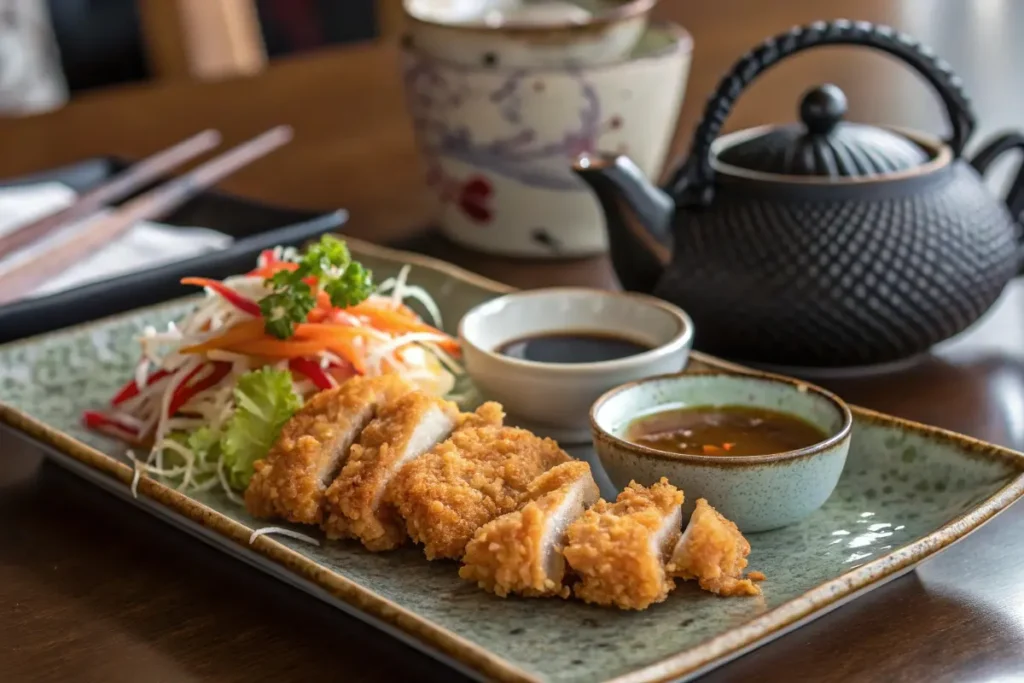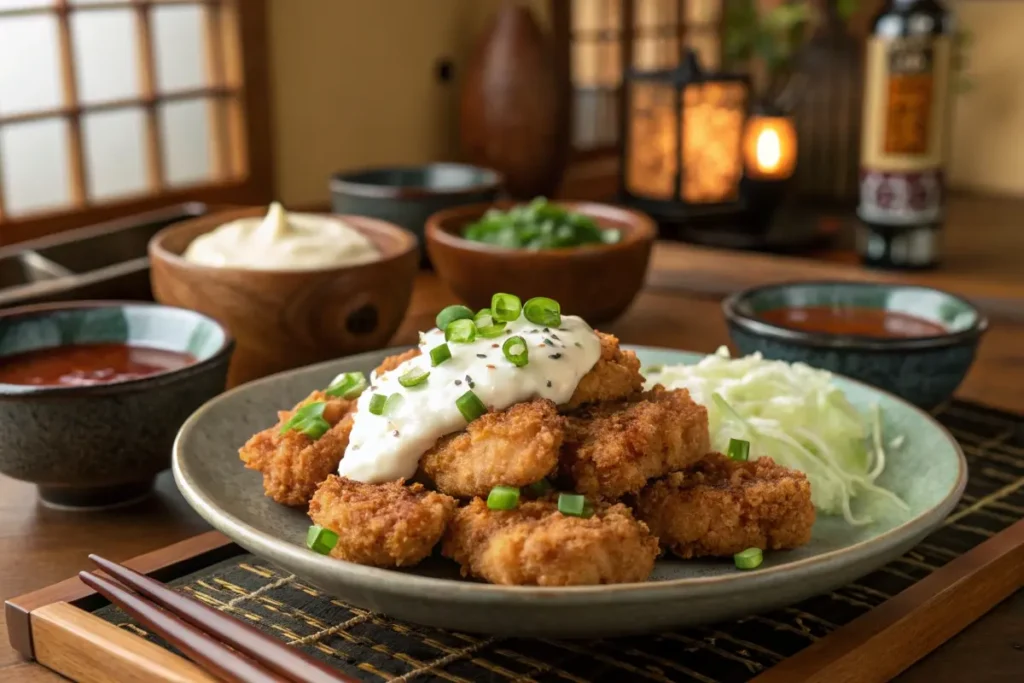
Chicken nanban is a beloved Japanese dish that strikes the perfect balance between tender chicken, crisp coating, and a refreshingly tangy sauce. Originating from Kyushu’s Miyazaki Prefecture, chicken nanban combines elements of sweet and sour flavors in a uniquely Japanese way. It’s not just another fried chicken recipe—it’s an evolution of tastes influenced by both local ingredients and international culinary trends. In the first 100 words here, we’re already focusing on chicken nanban as our primary keyword, shining a spotlight on its defining tangy sauce, succulent meat, and deep-fried perfection.
For anyone craving to explore new horizons of Japanese comfort food, chicken nanban is a must-try. With its roots in southern Japan, this crispy yet tangy dish serves as a prime example of how Western influences meld seamlessly into Japanese cuisine, resulting in a distinctive flavor that’s cherished at both family tables and restaurant counters across the country.
Discover other mouthwatering Japanese recipes to broaden your culinary repertoire after enjoying this standout dish.
Print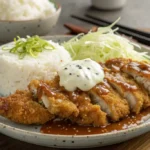
Chicken Nanban: A Crispy, Tangy Taste of Japan
- Total Time: 35 minutes
- Yield: 4 servings 1x
Description
Chicken Nanban – Crispy Japanese fried chicken soaked in a sweet‑vinegar nanban sauce, finished with creamy Japanese‑style tartar sauce; a tangy‑rich, comforting classic from Miyazaki, Japan.
Ingredients
500 g boneless chicken thighs (or breasts)
Salt & pepper
Flour and beaten egg for coating
Nanban sauce: rice vinegar, soy sauce, sugar, mirin (optional)
Japanese‑style tartar sauce: mayonnaise, boiled egg, minced onion/cucumber, lemon juice
Instructions
1. Season chicken and coat lightly in flour, dip in beaten egg.
2. Deep‑fry chicken at 170–180 °C until golden and cooked.
3. Immediately dip or drizzle hot chicken in nanban sauce.
4. Prepare tartar sauce by mixing chopped boiled egg, minced onion and cucumber, mayonnaise, lemon juice, and seasonings.
5. Serve chicken topped with tartar sauce, with rice and shredded cabbage or salad.
Notes
Use thigh meat for juiciness; breast can be used if preferred.
Ensure nanban sauce is used while chicken is hot to absorb flavor without losing crunch.
Japanese mayo (e.g. Kewpie) enhances authenticity in tartar sauce.
Let chicken drain briefly before saucing to maintain crispness.
- Prep Time: 20
- Cook Time: 15
- Category: Main Dish
- Method: Deep‑fry then sauce bath
- Cuisine: Japanese
Nutrition
- Serving Size: ~150 g chicken + sauce
- Calories: 480
- Sugar: 15 g
- Sodium: 600 mg
- Fat: 25 g
- Saturated Fat: 5 g
- Unsaturated Fat: 15 g
- Trans Fat: 0g
- Carbohydrates: 20 g
- Fiber: 1 g
- Protein: 35 g
- Cholesterol: 100 mg
Keywords: chicken nanban recipe, Japanese fried chicken, nanban sauce, Miyazaki dish
Table of Contents
What Is Chicken Nanban?
Chicken nanban can be described as deep-fried chicken fillets or nuggets coated in a tangy, sweet-and-sour marinade and often finished with tartar sauce. The term nanban traces back to Japan’s contact with European traders, specifically the Portuguese and Spanish, during the 16th century. Nanban was once used to describe anything foreign from the “southern barbarians,” as they were called, and over time the word found its way into culinary descriptions for dishes that featured Western influences—particularly sweet and sour flavors. While Japanese nanban can encompass various recipes, chicken nanban remains the most popular and widely recognized preparation.
Key Components of Chicken Nanban
- Marinated Fried Chicken: The chicken is usually cut into bite-sized pieces, battered, and then fried to achieve a crisp exterior. Unlike other Japanese fried chicken such as karaage, chicken nanban is dunked or drizzled in a vinegar-based sauce immediately after frying, imbuing it with a signature tang.
- Nanban Sauce: The main differentiator in nanban food is the distinct sauce. It typically consists of soy sauce, vinegar, sugar, and sometimes mirin for sweetness, plus aromatics like garlic or ginger. This balance of sweet, salty, and acidic flavors creates that addictive tang characteristic of chicken nanban.
- Tartar Sauce or Similar Creamy Topping: A hallmark of Miyazaki-style chicken nanban is a thick, mayonnaise-based topping, often akin to tartar sauce but with a Japanese twist. This creamy layer softens the tanginess and provides a rich contrast to the crunchy chicken.
Why Chicken Nanban Stands Out
- Deep Cultural Roots: While it’s easy to label chicken nanban as “fried chicken with sauce,” it actually encapsulates centuries of cultural exchange. The dish highlights how Japanese cuisine adopted and refined Western influences.
- Versatility: Chicken nanban can serve as a main course, a bar snack (served with cold beer), or even as a sandwich filling for a quick lunch. Its bold flavors pair well with everything from rice and noodles to freshly chopped salads.
- Easy to Customize: As with many home-cooked Japanese meals, chicken nanban allows for flexibility. Chefs and home cooks might adjust the ratio of vinegar to sugar, add spicy elements like chili flakes, or experiment with different garnishes like green onions, sesame seeds, or grated daikon.
Flavor Profile
- Tangy and Sweet: The vinegar-based sauce provides a pleasantly sharp tang, offset by sugar’s sweetness.
- Rich and Creamy: The optional tartar sauce contributes a velvety layer, turning every bite into an indulgent experience.
- Crispy Exterior with Juicy Interior: The secret to excellent chicken nanban lies in maintaining that crunch even after it’s dipped or drizzled with sauce.
With its balanced blend of flavors, nanban chicken has become synonymous with comfort food in Japan—particularly in Miyazaki Prefecture. While karaage might receive most of the international spotlight, chicken nanban arguably offers an even more dynamic tasting experience thanks to the interplay of textures and tastes.
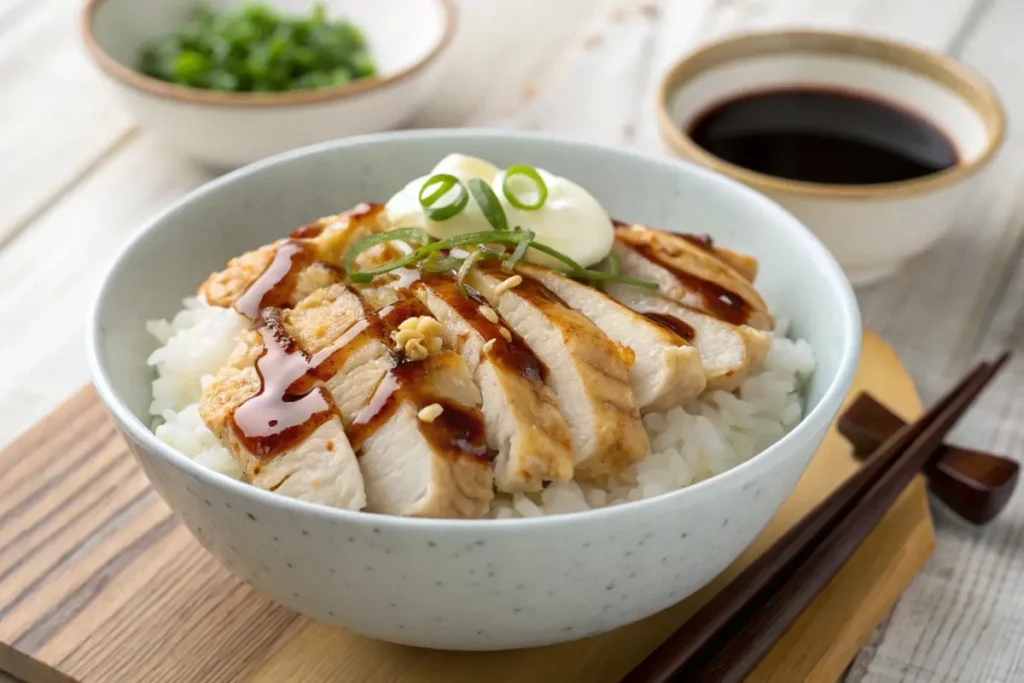
For further exploration of fried chicken variations in Japan, you can see our Japanese Chicken Fried Rice Recipe to pair with your meal.
Ingredients and Preparation
Properly preparing chicken nanban involves a careful blend of flavors and techniques. Although the dish might seem complex at first, it’s actually straightforward once you understand the essential components: quality chicken, a well-seasoned flour or batter, a tangy marinade, and optionally, a creamy sauce. Below is a basic guideline to get you started.
Key Ingredients
- Chicken: Boneless chicken thighs are often preferred for juiciness, but breast meat can also be used. Thighs have more fat, ensuring a richer taste.
- Nanban Sauce:
- Soy Sauce: Provides a salty, umami depth.
- Vinegar (often rice vinegar): Delivers that signature tang.
- Sugar or Mirin: Balances acidity with sweetness.
- Aromatics: Minced garlic, ginger, or chili flakes can be added for layers of flavor.
- Batter or Coating:
- Many cooks use a simple combination of flour and beaten eggs. Some prefer a tempura-like batter. The aim is a crisp surface that can absorb the sauce without turning soggy instantly.
- Tartar Sauce (Optional):
- Mayonnaise: Often Japanese-style mayo, known for its slightly sweeter, richer taste.
- Pickles or Onions: Finely diced pickles, onions, or even boiled eggs can be mixed in for texture.
- Herbs/Spices: Parsley, dill, or a pinch of black pepper enhance the flavor profile.
Step-by-Step Cooking Process
- Marinate the Chicken (Optional):
- While not mandatory, marinating the chicken in a bit of soy sauce, ginger, and garlic can elevate its flavor. This pre-seasoning step can last anywhere from 20 minutes to overnight.
- Coat the Chicken:
- Dust chicken pieces lightly with flour or cornstarch. Then dip them in beaten egg or a thin batter. The egg helps seal moisture and creates a protective layer for crisp frying.
- Frying:
- Heat oil in a deep pan to around 170–180°C (340–360°F). Carefully place the coated chicken pieces into the oil. Fry until golden brown, about 4–6 minutes depending on thickness.
- Transfer to a wire rack or paper towel to drain excess oil.
- Saucing:
- While the chicken is still warm, dip or drizzle it with the nanban sauce. Allow the meat to absorb the flavors for at least a minute on each side.
- Topping with Tartar:
- Spread or dollop tartar sauce on top of each piece. This creamy finish contrasts beautifully with the tangy sauce and crispy chicken.
Tips for Success
- Maintain Oil Temperature: Fluctuating heat can lead to uneven cooking or overly greasy chicken.
- Balance the Sauce: Adjust sugar, vinegar, and soy sauce according to your taste preference. Some enjoy a stronger acidity, others might prefer more sweetness.
- Serving: Plate immediately after saucing for best texture. If left too long, the chicken may lose crispness.
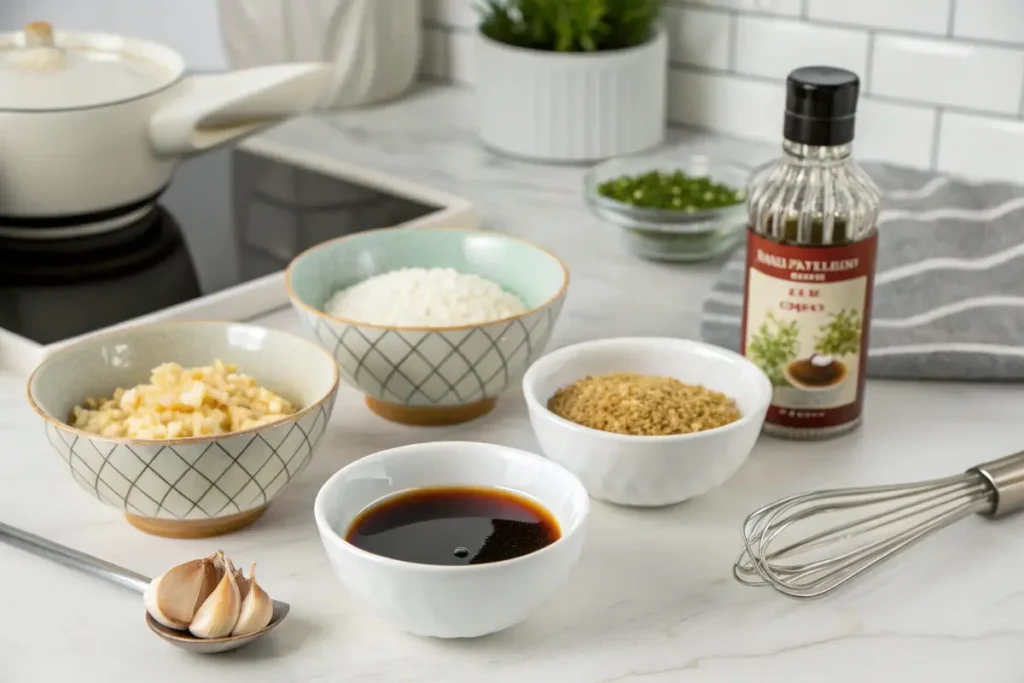
For insights into other popular sauce-based dishes, visit our Japanese Barbecue Sauce Recipes to compare and contrast flavor profiles.
The Difference Between Chicken Nanban and Karaage
Chicken nanban and karaage are two fried chicken dishes that hold a special place in Japanese culinary culture. While they might appear similar at first glance—both are crispy and deeply satisfying—there are notable differences in their preparation, flavor, and even cultural background. Understanding these distinctions can help you choose the right dish for your palate or specific occasion.
Key Distinctions
- Sauce vs. Seasoning
- Chicken Nanban: The chicken is fried and then coated or dipped in a tangy sauce, which is the hallmark of any nanban japanese dish. This sauce provides a sweet-and-sour punch, often balanced by an optional creamy topping.
- Karaage: Karaage chicken is marinated in a ginger-soy base (and sometimes garlic) before frying, but it generally isn’t sauced afterward. Instead, it relies on its own seasoning and a crisp exterior to deliver flavor.
- Flavor Profiles
- Nanban Chicken: While it does pick up mild umami notes from soy sauce in the marinade, its overarching character is defined by the vinegar-based sauce. Some describe this flavor combination as reminiscent of Western sweet-and-sour dishes, but with a distinct Japanese twist.
- Karaage: Karaage leans more toward pure umami and savory notes. It’s commonly served with a wedge of lemon and mayonnaise or as part of bento lunches. The zesty marinade tends to remain subtly infused in the chicken rather than dominating it.
- Regional Origins and Popularity
- Chicken Nanban: Believed to have originated in Miyazaki Prefecture, chicken nanban emphasizes the southern Kyushu tradition of sweet-and-tart flavors. Restaurants in Miyazaki fiercely compete to showcase their unique spins on this dish.
- Karaage: Karaage is more widespread and commonly associated with bar food and festival stalls. It’s considered a national staple and can be found in countless variations across Japan.
- Texture and Serving Styles
- Chicken Nanban: Usually served hot and fresh, accompanied by fresh vegetables, slaw, or a bed of shredded cabbage. The vinegar sauce adds moisture and tenderness to the chicken’s exterior.
- Karaage: Crispness is paramount, and it’s often eaten by itself or with minimal garnishes like lemon or optional mayonnaise. The emphasis is on preserving the crunchy coating.
Which One to Choose?
- Pick chicken nanban if you enjoy tangy sauces and the interplay of sweet, sour, and creamy elements.
- Opt for karaage if you favor a simpler, more straightforward fried chicken experience that highlights deep umami notes without a saucy finish.
Ultimately, both dishes reflect Japan’s love for fried foods and its knack for blending Western influences with local tastes. Each has its merits, so trying both is the best way to discover your personal preference.
If you’re curious about more ways to enjoy chicken in Japanese cooking, check out our Japanese Chicken Fried Rice Recipe for a one-pan meal idea.
Health Considerations – Is Nanban Chicken Healthy?
The question “Is nanban chicken healthy?” arises frequently. While deep-fried chicken might not typically be branded as health food, certain aspects of chicken nanban can be customized to meet dietary preferences or nutritional goals.
Calories and Macronutrients
- Frying Factor: Deep-frying inherently adds calories due to oil absorption. Using skinless chicken thighs or breasts can reduce fat content, though thighs provide richer flavor.
- Sauce Sugars: Nanban sauce typically contains sugar or mirin, which raises the carbohydrate count. However, the quantity used per serving can be modest if you keep the drizzle light.
Possible Healthier Modifications
- Air-Frying or Oven-Baking: Instead of deep-frying, you can achieve a decent level of crispness through an air fryer or by oven-baking. Lightly coat the chicken with oil and a layer of panko or cornstarch to simulate the fried texture.
- Low-Sugar Variations: Reduce or substitute sugar with a healthier alternative like stevia or a small amount of honey. This approach can help cut down simple carbohydrates while retaining sweetness.
- Tartar Sauce Alternatives: The creamy topping can be swapped for Greek yogurt-based sauces, reducing saturated fats. Adding fresh herbs, chopped cucumbers, or onions can preserve the textural contrast.
- Portion Control: Enjoy chicken nanban in moderation. Combine it with a vibrant salad or steamed vegetables for a balanced meal, reducing the overall caloric impact of the fried chicken.
Nutritional Positives
- Protein Source: The chicken itself is a good source of protein.
- Balance of Macros: A balanced meal can be created by pairing chicken nanban with fiber-rich side dishes, like brown rice or a veggie stir-fry.
- Customization: Homemade chicken nanban offers control over every ingredient, allowing you to reduce sodium, fat, or sugar levels according to your goals.
While nanban chicken won’t be the leanest dish on the menu, mindful preparation techniques and thoughtful ingredient choices can certainly elevate its nutritional profile. Moderation and strategic swaps—like oven-baking or using lower-sugar sauce variants—make it possible to enjoy the tangy, savory pleasures of chicken nanban without derailing a healthy lifestyle.
For more inspiration on lighter Japanese dishes, explore our Healthy Japanese Recipes for options that prioritize flavor and nutrition.
History of Chicken Nanban
Early Influences and Etymology
The word nanban hearkens back to Japan’s early encounters with foreign traders—especially the Portuguese—in the 16th century. Nanban, which literally translates to “southern barbarian,” was originally a term for these newcomers. Over time, the phrase took on culinary significance, describing dishes or ingredients that carried a Western or exotic flair. Hence, vinegar- and spice-infused sauces became associated with nanban cuisine.
Miyazaki Roots
The modern version of chicken nanban gained prominence in Miyazaki Prefecture, located on the southeastern coast of Kyushu. According to local lore, the dish was allegedly conceived by a restaurant owner in the 1960s. Tasked with repurposing leftover fried chicken, he doused it in a sweet-and-sour sauce to refresh its flavor and texture. The result was an instant hit among patrons, and other eateries soon followed suit, competing to perfect their own recipe.
Evolving Through the Decades
- Widespread Adoption: By the 1970s and 1980s, chicken nanban spread throughout Kyushu and eventually made its way into other parts of Japan. Restaurants started experimenting with different vinegar ratios, sugar levels, and even adding local citrus juices for a tangy kick.
- Introduction of Tartar Sauce: Another key development was the addition of tartar sauce. This change was possibly inspired by the Western practice of pairing fried foods with mayonnaise-based condiments. Miyazaki’s version of chicken nanban quickly became synonymous with this rich, creamy topping.
- Local Pride: Many Miyazaki residents view chicken nanban as a culinary symbol of their region. Local festivals sometimes feature nanban cook-offs, while specialty shops proudly declare their sauces and cooking methods as “authentically Miyazaki.”
Chicken Nanban in the Global Context
While chicken nanban remains predominantly a Japanese specialty, its international appeal has grown in recent years. The dish has caught the attention of food enthusiasts seeking new takes on fried chicken. Many Japanese restaurants abroad now include it on their menus, often labeled as “sweet and sour fried chicken” or “Japanese nanban chicken,” introducing it to a broader global audience.
From its somewhat unexpected beginnings to its current status as a standout among nanban food, chicken nanban embodies cultural adaptation and constant evolution—a trait that underscores much of Japan’s culinary history.
Practical Examples & Use Cases
Chicken nanban’s adaptability makes it a crowd-pleasing option for a variety of meals, from quick weekday dinners to festive gatherings. Below are some practical examples of how to integrate chicken nanban into your culinary repertoire.
- Bento Box Star
- Pair chicken nanban with pickled vegetables, a small salad, and steamed rice for a well-balanced lunch. The tangy sauce complements other bento staples like tamagoyaki (rolled omelet) or grilled fish.
- Pub-Style Snack
- Serve bite-sized chicken nanban pieces alongside cold beer as an appetizer or bar snack. The refreshing vinegar punch contrasts the richness of the fried chicken, making it an ideal match for drinks.
- Fusion Sandwich
- For a modern twist, slip chicken nanban into a soft bun with crunchy lettuce and a smear of tartar sauce. Top it off with thinly sliced cucumbers or pickled onions for extra zing.
- Family Dinner Centerpiece
- Present a large platter of chicken nanban at the dinner table. Accompany it with bowls of miso soup, a fresh cabbage salad, and steamed rice to create a comforting Japanese home-cooked feast.
- Meal Prep
- Chicken nanban remains flavorful even after it cools, making it a viable option for meal preps. You can reheat in a toaster oven or microwave, although the crispiness may diminish slightly.
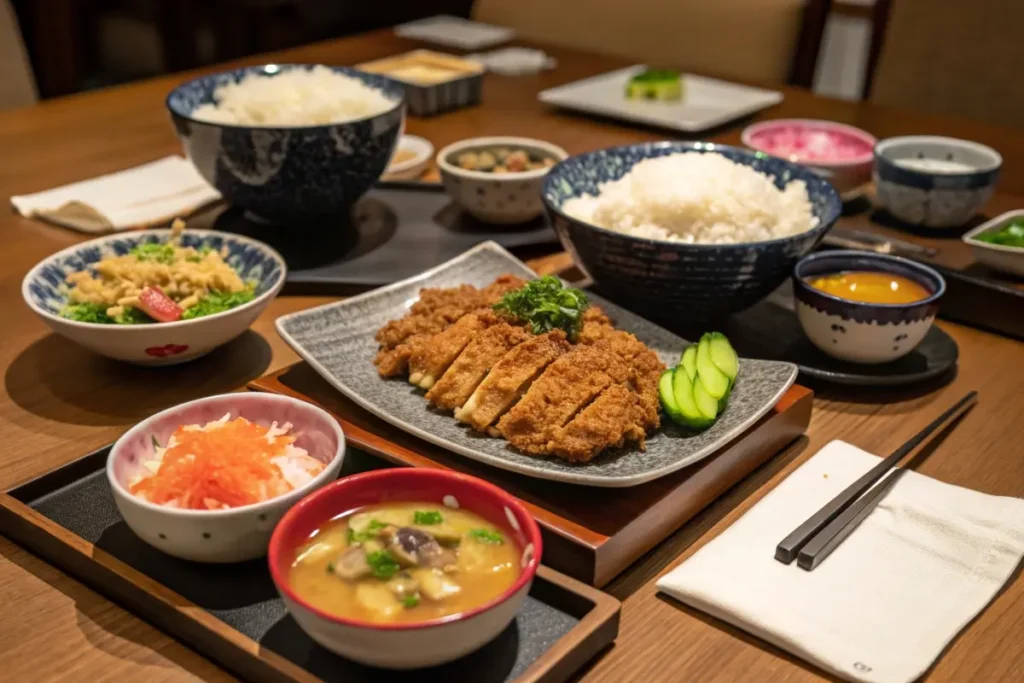
FAQs
Below are some commonly asked questions about chicken nanban, reflecting the curiosity of cooks and diners alike.
1. What is chicken Nanban?
Chicken Nanban is a popular Japanese dish originating from Miyazaki Prefecture. It consists of fried chicken pieces that are briefly marinated or coated in a tangy, sweet-and-sour sauce. Many versions also feature a creamy tartar sauce topping, making it a unique fusion of Western and Japanese flavors.
2. What is Japanese nanban?
The term nanban historically referred to foreign influences introduced to Japan during the 16th century. In culinary terms, nanban often denotes dishes that incorporate sweet-and-sour sauces or Western-inspired elements. Chicken nanban is one of the most famous examples of this style.
3. What is the difference between chicken Nanban and karaage?
While both are forms of Japanese fried chicken, chicken nanban is coated in or dipped into a vinegar-based sauce after frying, which gives it a tangy kick. Karaage is typically marinated in ginger, soy sauce, and garlic before frying and does not receive a post-fry sauce bath. Thus, karaage has a more straightforward savory flavor, whereas chicken nanban has a sweet-and-sour profile.
4. Is nanban chicken healthy?
Chicken nanban is deep-fried and often served with a sugar-based sauce and creamy topping, so it can be high in calories and fat. However, modifications like air-frying, baking, or using low-sugar sauces can enhance its nutritional profile. Pairing it with a side salad or vegetables also helps create a more balanced meal.
5. Can I prepare chicken nanban without tartar sauce?
Absolutely. While tartar sauce is commonly associated with Miyazaki-style chicken nanban, you can omit it or replace it with lighter alternatives such as a yogurt-based dressing or plain mayonnaise. The dish will still feature its signature tang from the nanban sauce.
Conclusion
Chicken nanban embodies the essence of Japanese comfort food—crispy, flavorful, and anchored by a one-of-a-kind tangy sauce. Hailing from Miyazaki Prefecture, this dish offers a culinary tapestry woven from Japan’s historical exchanges with Western influences. Whether you choose to top it with creamy tartar sauce, keep it simple with the vinegar-based marinade, or explore healthier cooking methods, chicken nanban promises a satisfying balance of sweet, sour, and savory elements.
For those seeking a new avenue to experience Japanese cuisine, there’s no better introduction than the dynamic flavors of chicken nanban. It’s equally suitable for a weeknight family meal, a quick lunch, or a celebratory get-together with friends. The dish can stand alone as a main course or complement a broader spread of Japanese dishes like miso soup, pickled vegetables, or even noodles.
Explore more comforting Japanese creations to complete your meal, such as a sweet note of dessert or a side dish that further accentuates the vibrant tastes of chicken nanban. However you serve it, this dish is sure to delight and inspire you to delve deeper into the rich culinary world of Japan.
